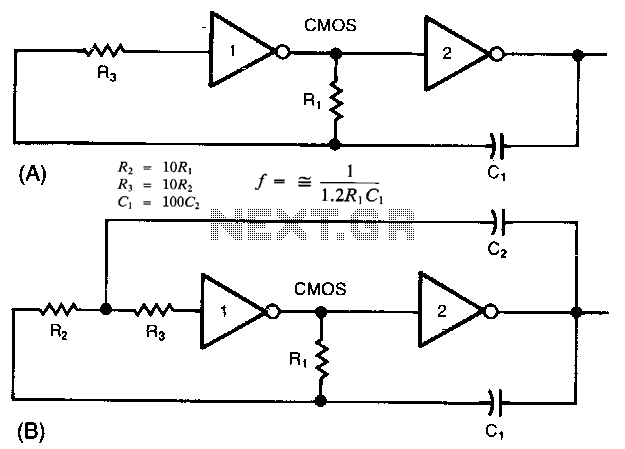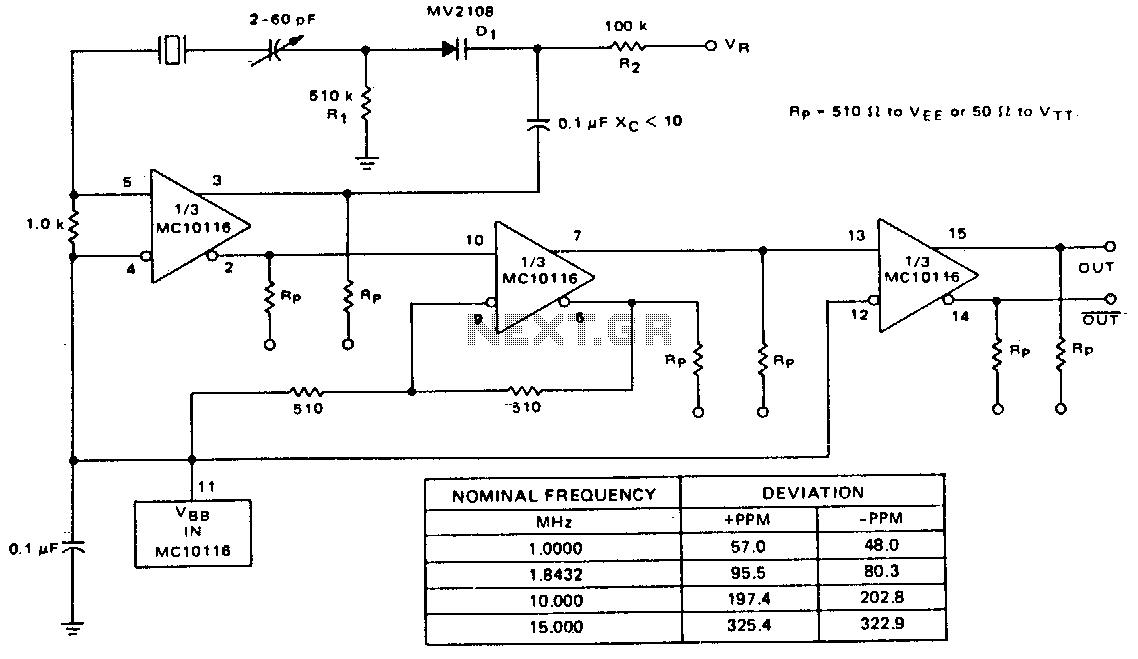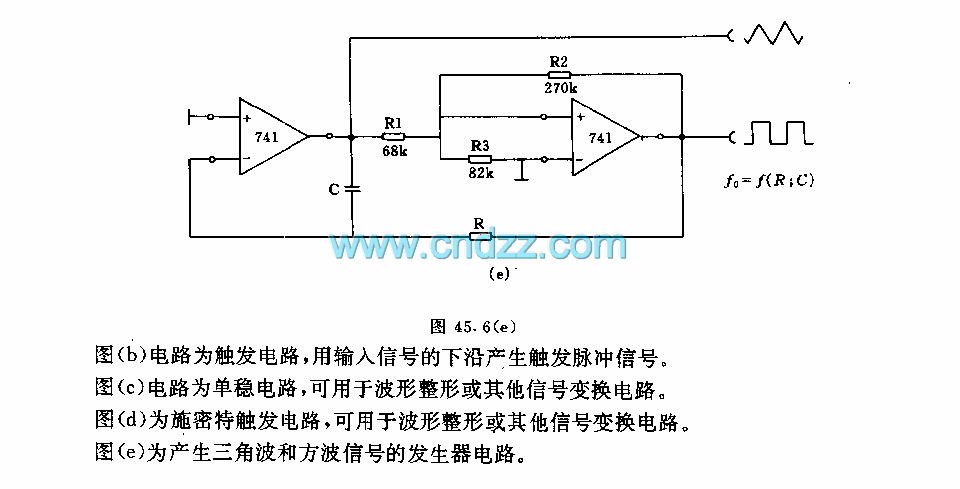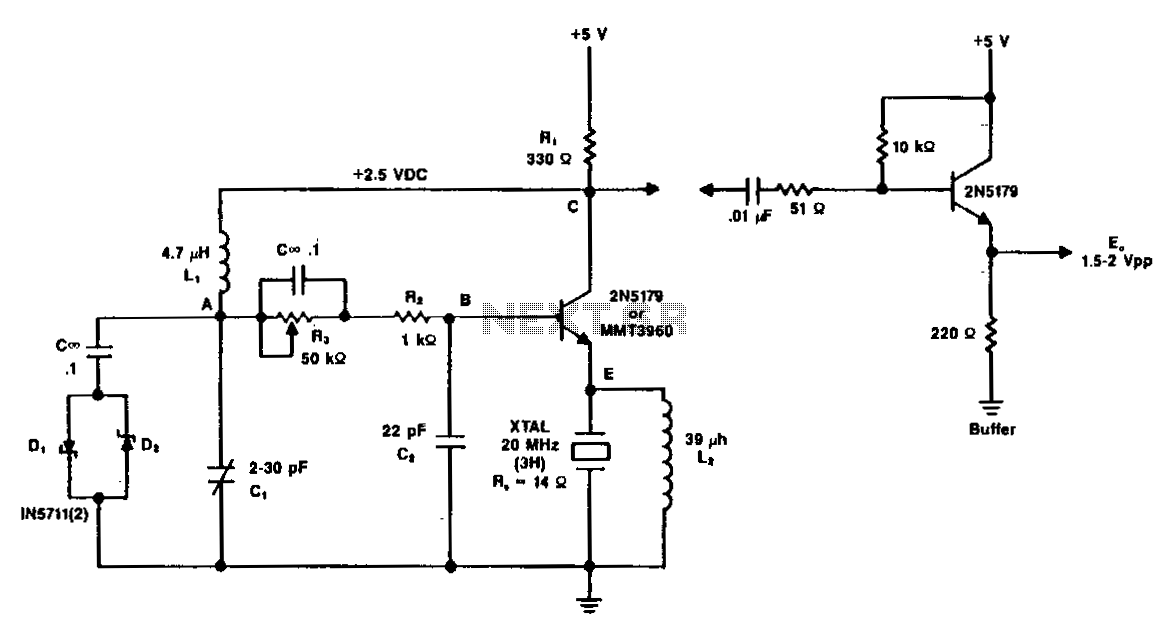
Precision oscillator
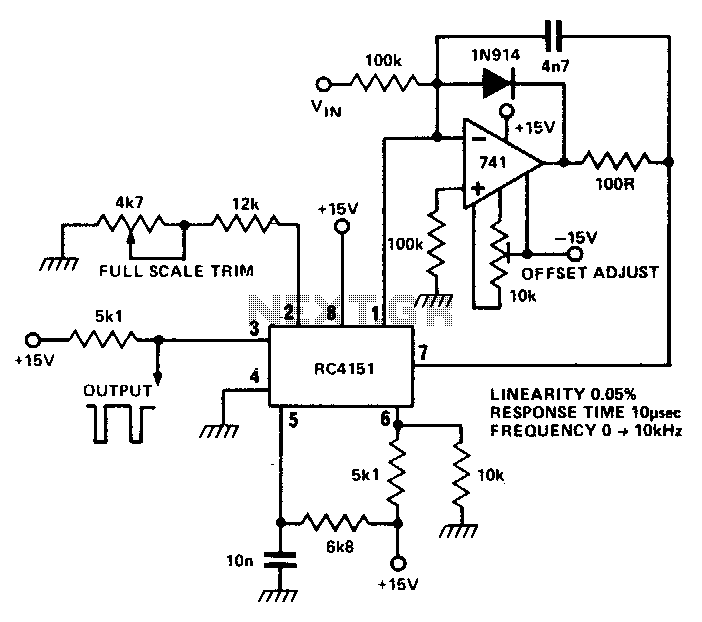
The RC 4151 precision voltage-to-frequency converter generates a pulse train output that is linearly proportional to the input voltage.
The RC 4151 is a highly accurate voltage-to-frequency converter designed for applications requiring precise frequency output based on varying voltage levels. This device operates by converting an analog input voltage into a digital pulse train, where the frequency of the output pulses is directly proportional to the amplitude of the input voltage.
The internal architecture of the RC 4151 typically includes a voltage comparator, a timing circuit, and a pulse generator. The voltage comparator compares the input voltage against a reference voltage to determine the output frequency. As the input voltage increases, the frequency of the output pulse train also increases linearly, making it suitable for applications such as analog-to-digital conversion, signal processing, and frequency modulation.
The RC 4151 can be used in various applications including data acquisition systems, frequency modulation transmitters, and precision measurement instruments. Its ability to provide a stable and repeatable output makes it an ideal choice for engineers and designers looking for reliable voltage-to-frequency conversion. Additionally, the device may include features such as temperature compensation and low power consumption, further enhancing its applicability in sensitive electronic systems.
When designing circuits with the RC 4151, careful consideration must be given to the power supply requirements and the input voltage range to ensure optimal performance. Proper filtering and decoupling techniques should also be employed to minimize noise and ensure accurate frequency output.RC 4151 precision voltage-to-frequency converter generates a pulse train output linearly proportional to the input voltage. 🔗 External reference
The RC 4151 is a highly accurate voltage-to-frequency converter designed for applications requiring precise frequency output based on varying voltage levels. This device operates by converting an analog input voltage into a digital pulse train, where the frequency of the output pulses is directly proportional to the amplitude of the input voltage.
The internal architecture of the RC 4151 typically includes a voltage comparator, a timing circuit, and a pulse generator. The voltage comparator compares the input voltage against a reference voltage to determine the output frequency. As the input voltage increases, the frequency of the output pulse train also increases linearly, making it suitable for applications such as analog-to-digital conversion, signal processing, and frequency modulation.
The RC 4151 can be used in various applications including data acquisition systems, frequency modulation transmitters, and precision measurement instruments. Its ability to provide a stable and repeatable output makes it an ideal choice for engineers and designers looking for reliable voltage-to-frequency conversion. Additionally, the device may include features such as temperature compensation and low power consumption, further enhancing its applicability in sensitive electronic systems.
When designing circuits with the RC 4151, careful consideration must be given to the power supply requirements and the input voltage range to ensure optimal performance. Proper filtering and decoupling techniques should also be employed to minimize noise and ensure accurate frequency output.RC 4151 precision voltage-to-frequency converter generates a pulse train output linearly proportional to the input voltage. 🔗 External reference
Warning: include(partials/cookie-banner.php): Failed to open stream: Permission denied in /var/www/html/nextgr/view-circuit.php on line 713
Warning: include(): Failed opening 'partials/cookie-banner.php' for inclusion (include_path='.:/usr/share/php') in /var/www/html/nextgr/view-circuit.php on line 713


